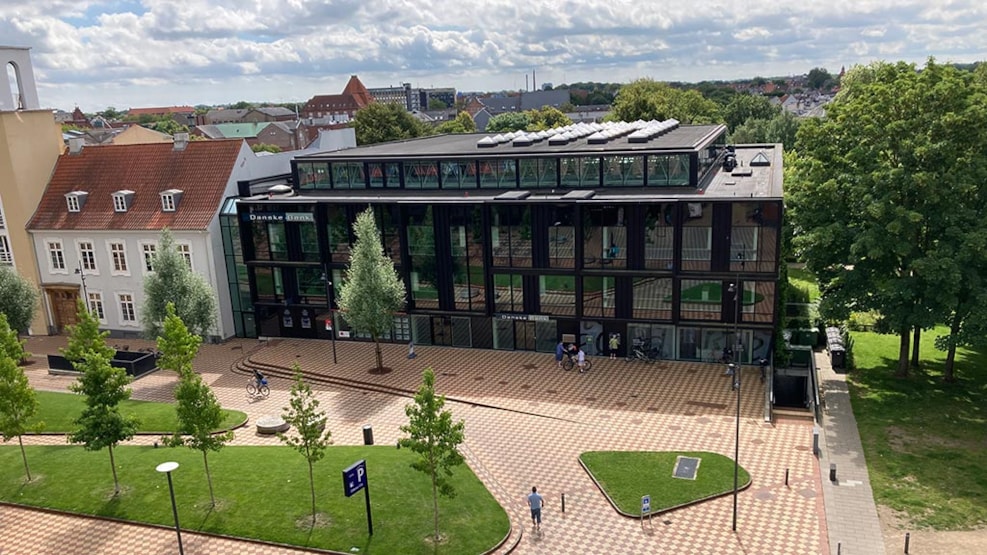
Marking of the original Albani Church
This marker shows the location of the wooden church, St. Albani, where Denmark's last Viking king, Cnut the Holy, was murdered on July 10, 1086.
King Cnut the Holy was the king of Denmark from around 1042 until his murder in 1086. His murder was the culmination of a rebellion against him, where he was chased from Jutland to his royal estate in Odense. On July 9, the king left the royal estate to attend evening prayers at St. Albani Church. Here, the rebels found him in front of the altar, and early in the morning, King Cnut was killed with a spear to the side. The cross in the pavement marks the spot where Cnut the Holy was killed.
The round markers around the square show where the posts of the original wooden St. Albani Church stood. The wooden church probably dates from the second half of the 11th century. After the murder, Cnut was initially buried in the church.
Shortly after the murder, miracles began to occur around the church, leading to Cnut's canonization. In 1095, Cnut was enshrined and placed in the crypt of the newly built St. Cnut's Cathedral, where you can still see the earthly remains of Cnut the Holy today.
Odense's current cathedral, St. Cnut's Church, was presumably intended to be built on the same site as St. Albani Church, but in 1886, the location of St. Albani Church, as we know it today, was discovered.
The square marker in the pavement shows where one of Odense's first bishops was buried. The grave is now on display at TID – Museum of Odense.